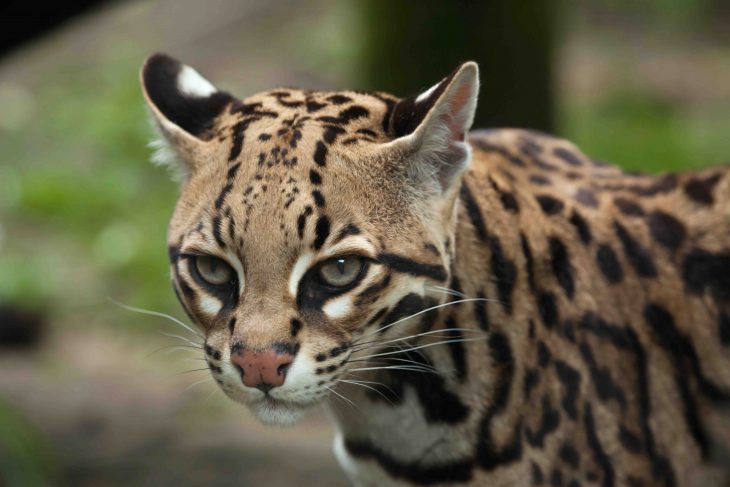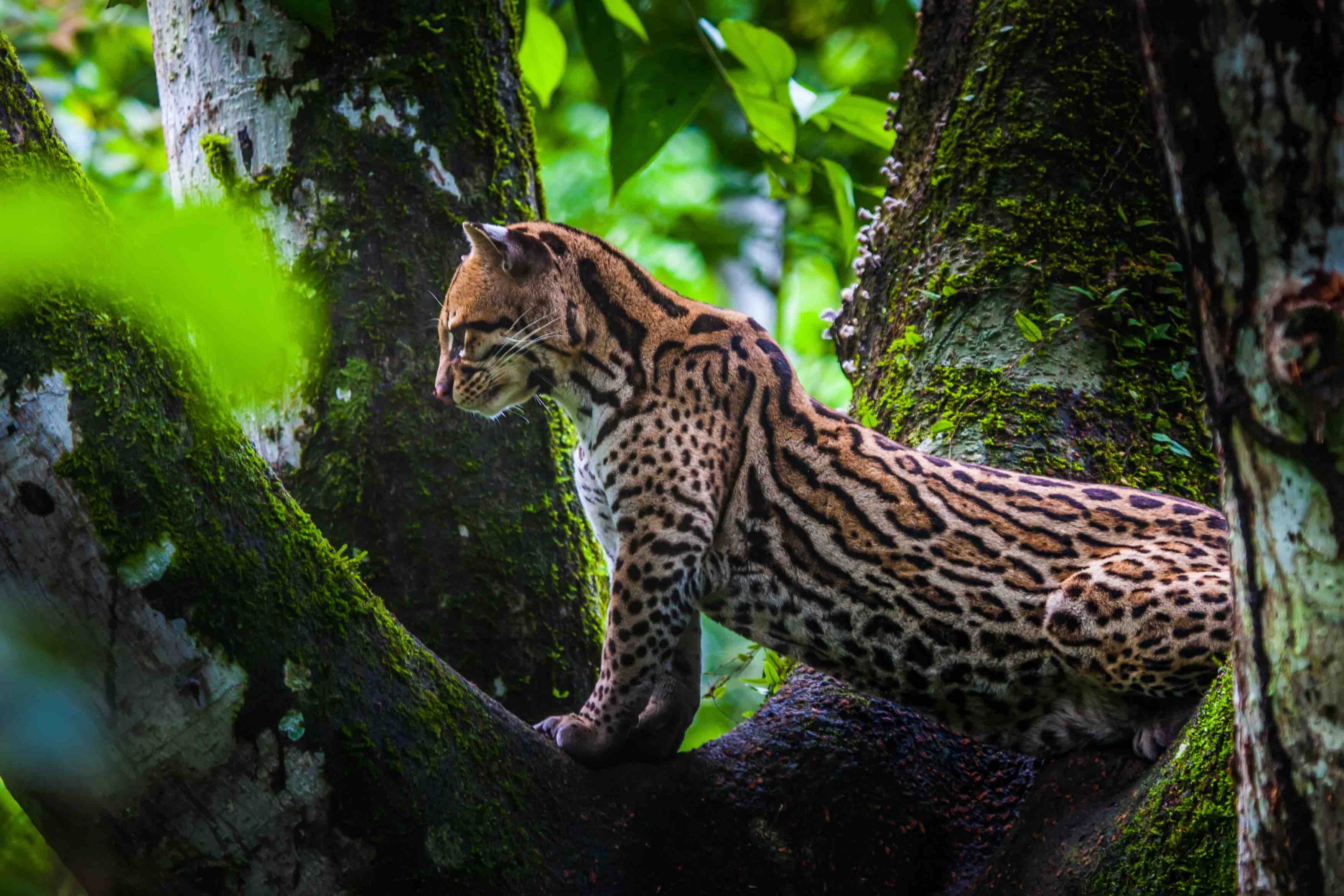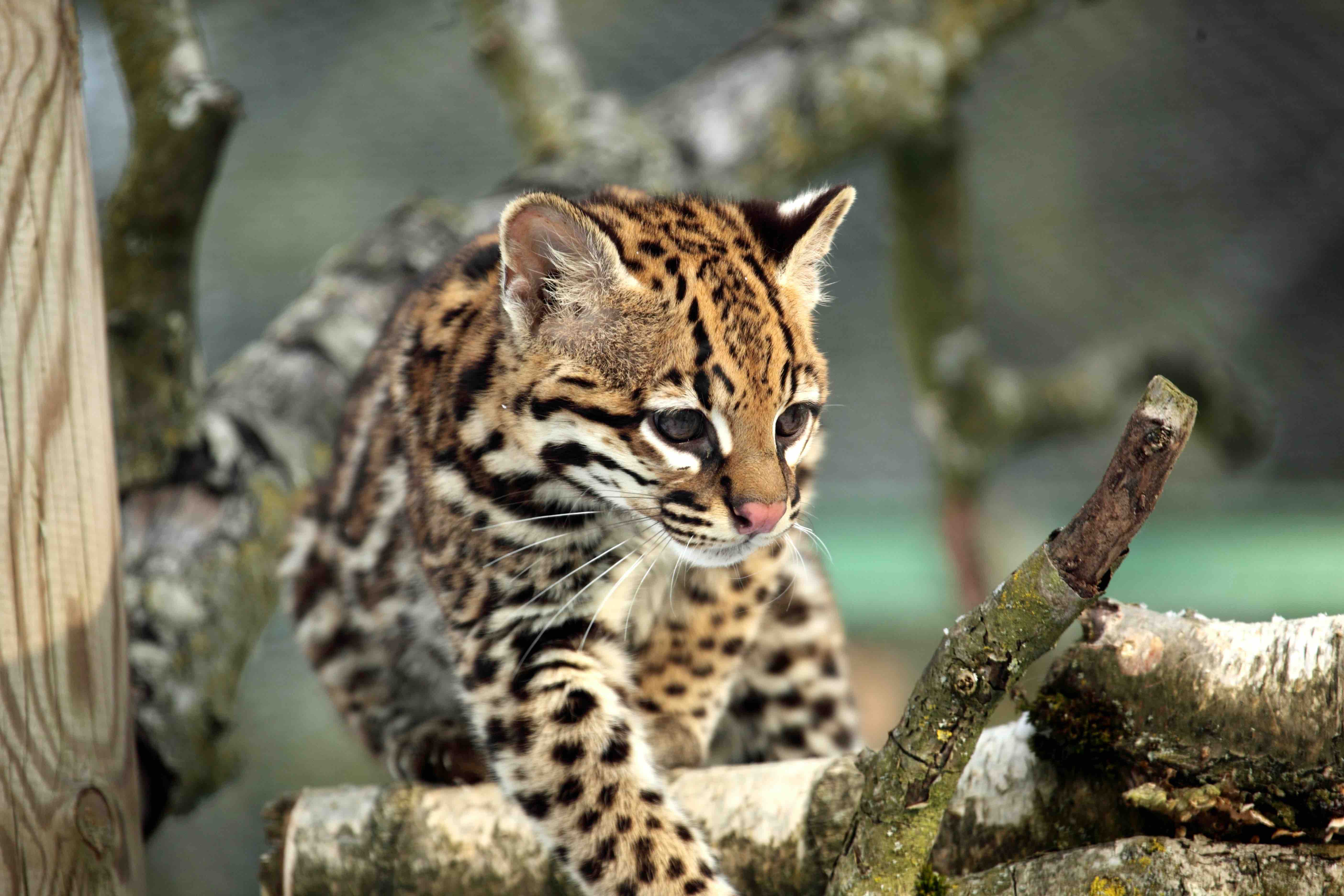
Ocelots are mesmerizing creatures that roam the dense forests of Central and South America. With their distinctive coat patterns and captivating eyes, these wild cats have captured the imagination of many. In this article, we will delve into the mysterious world of ocelots and uncover 18 fascinating fun facts about these elusive creatures.
Graceful Hunters
Ocelots are skilled hunters, known for their agility and stealth. They are primarily nocturnal, relying on their keen eyesight and sharp hearing to navigate their surroundings and locate prey.
Gorgeous Coat Patterns
One of the most striking features of ocelots is their beautiful coat patterns. Their fur consists of a mix of spots, stripes, and rosettes, which vary in color from yellow to reddish-brown, providing excellent camouflage in their natural habitat.
Solitary Creatures
Ocelots are solitary animals, preferring to roam alone within their territory. Each individual ocelot has its own designated area, which can span several square miles, and they mark their territory with scent markings.
Excellent Climbers

These agile felines are exceptional climbers. They can effortlessly ascend trees, using their sharp retractable claws to grip onto branches. Ocelots often rest and hunt from elevated perches, giving them an advantage in spotting prey.
A Varied Diet
Ocelots are opportunistic carnivores with a diverse diet. They prey on small to medium-sized animals, including rodents, birds, reptiles, and even fish. Occasionally, they may also hunt larger prey such as monkeys and deer.
Powerful Jaws
Equipped with strong jaw muscles, ocelots have a bite force that allows them to deliver a swift and decisive attack on their prey. Their sharp canine teeth and retractable claws aid in capturing and subduing their meals.
Vocal Communication
While ocelots are generally silent creatures, they do communicate through a range of vocalizations. These include hisses, growls, purrs, and even high-pitched screams, which are used for territorial disputes or during mating season.
Mysterious Nocturnal Wanderers
As nocturnal animals, ocelots have adapted to thrive in the darkness. Their eyes have a reflective layer called the tapetum lucidum, which enhances their night vision by reflecting light back through the retina.
Habitat Diversity
Ocelots can be found in a variety of habitats, including tropical rainforests, mangrove swamps, and savannas. They have a wide distribution, ranging from southern Texas in the United States to northern Argentina.
Elusive Sightings
Due to their solitary and elusive nature, ocelots are rarely spotted in the wild. They are masters of camouflage, blending seamlessly into their surroundings, which makes them challenging to observe and study.
Cultural Significance
In some indigenous cultures, ocelots hold symbolic importance. They are often associated with power, agility, and mysticism. Ocelot motifs can be found in traditional art, folklore, and spiritual practices.
Endangered Status
While ocelots are not currently classified as endangered, they are still threatened by habitat loss and illegal hunting. Conservation efforts and protected areas play a vital role in ensuring the long-term survival of these remarkable cats.
Playful Nature
Despite their fierce hunting skills, ocelots also exhibit a playful side. They engage in behavior such as chasing their own tails, pouncing on fallen leaves, and play-fighting, which helps them refine their hunting techniques.
Mating Rituals
During mating season, male ocelots mark their territory and vocalize to attract females. Courtship involves behaviors like rubbing against objects and rolling on the ground to leave their scent. A female ocelot will choose her mate based on these displays.
Cubs and Parenthood

After a gestation period of approximately 70 to 85 days, a female ocelot gives birth to a litter of one to three adorable cubs. She provides sole care for her young, teaching them essential hunting skills until they are ready to venture out on their own.
Conservation Success Stories
Thanks to conservation efforts and protected areas, some ocelot populations have shown signs of recovery. These success stories highlight the importance of preserving their natural habitats and raising awareness about the conservation of these remarkable creatures.
Captivating Captive Ocelots
In some zoos and wildlife sanctuaries, ocelots are kept in captivity for educational and conservation purposes. These facilities provide opportunities for people to learn about ocelots up close and support efforts to protect their wild counterparts.
Enigmatic and Enthralling
Ocelots remain enigmatic creatures, captivating the hearts of wildlife enthusiasts around the world. Their unique beauty, elusive nature, and fascinating behaviors make them a captivating subject of study and admiration.
Final Word
Ocelots continue to captivate us with their beauty, mystery, and adaptability. Exploring the intriguing world of these remarkable cats allows us to appreciate the delicate balance of nature and the importance of preserving their habitats for future generations to cherish.
FrequentlyAsked Questions (FAQs)
Are ocelots dangerous to humans?
Ocelots are generally not dangerous to humans. They tend to avoid interactions and prefer to retreat rather than confront humans. However, it’s important to remember that they are wild animals, and it’s always best to observe them from a safe distance.
Can ocelots be kept as pets?
In most places, keeping ocelots as pets is illegal without the proper permits and licenses. Additionally, ocelots are wild animals with specific needs and behaviors that are difficult to meet in a domestic setting. They require vast amounts of space, specialized care, and a natural environment to thrive.
How fast can ocelots run?
Ocelots can reach speeds of up to 30 miles per hour (48 kilometers per hour) in short bursts. Their agility and speed help them capture agile prey and navigate their habitat with ease.
What is the lifespan of an ocelot?
In the wild, ocelots typically live for around 10 to 13 years. In captivity, where they have access to proper nutrition and veterinary care, they can live up to 20 years or more.
Are ocelots endangered?
While ocelots are not currently classified as endangered, they are still threatened by habitat loss and illegal hunting. Continued conservation efforts are crucial to ensure their long-term survival.
Was this page helpful?
Our commitment to delivering trustworthy and engaging content is at the heart of what we do. Each fact on our site is contributed by real users like you, bringing a wealth of diverse insights and information. To ensure the highest standards of accuracy and reliability, our dedicated editors meticulously review each submission. This process guarantees that the facts we share are not only fascinating but also credible. Trust in our commitment to quality and authenticity as you explore and learn with us.


